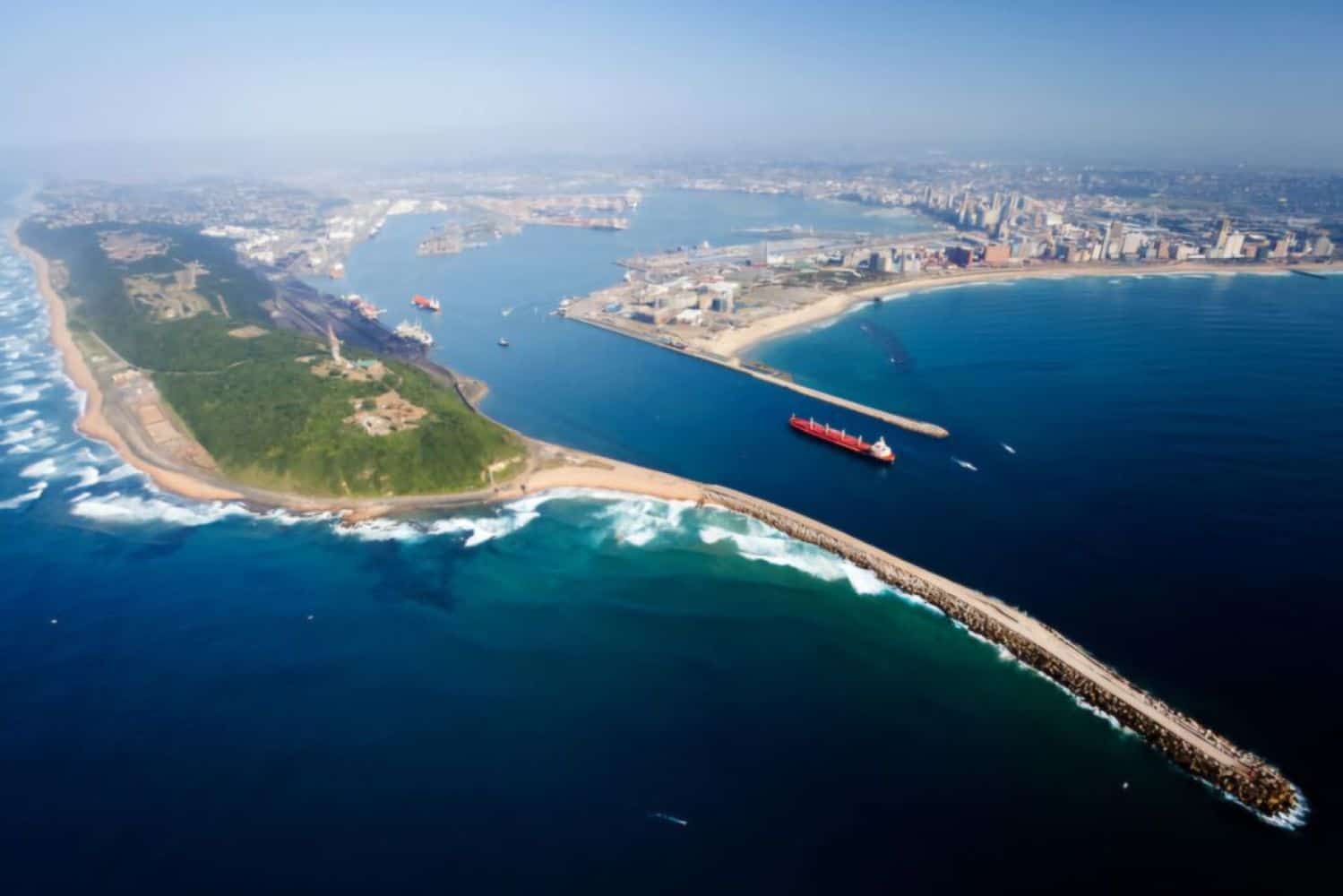Turnaround times for permit processing have been reduced from 10-12 days to 48 hours as ICTSI prepares takeover and new cranes are deployed.

Ranked last in the world by the World Bank in 2024, the Port of Durban appears determined to claw its way off the bottom of that list.
The past month has seen the private sector team up with the Border Management Agency (BMA) to address operational issues and improve efficiencies.
According to industry news site Chicken Facts, the reopening of poultry trade with Brazil resulted in a sharp increase in applications for removal permits at Durban port. These permits are required by the BMA for the release and physical removal of specific imported goods, particularly perishable items such as meat.
Turnaround times for the permits have been reduced from 10-12 days to just 48 hours, a major improvement in operational efficiency.
The permit backlog was resolved in seven days, assisted by an expanded staff team that now processes an average of 118 removal permits a day.
Durban was ranked dead last out of 403 ports worldwide in the World Bank Container Port Index for 2024. By the time that report came out in September, there were already vast operational and equipment improvements at the container port.
The index has been criticised for its narrow focus on port turnaround times, without taking into account landside logistics performance, such as hinterland connectivity, customs, or trucking and rail transport. Nor is there any weight given to costs, service quality, pricing, sustainability, or terminal-level variation.
ALSO READ: Durban making good on promise to get off world’s worst port list
Port management
The latest operational performance improvements suggest Durban is determined remove itself from the bottom end of the World Bank’s port list.
This will be given added impetus under new management by Philippines-based International Container Terminal Services Inc (ICTSI), which is expected to take over port control in early 2026.
This follows the Durban High Court’s October rejection of losing bidder Maersk’s attempts to halt the award of a 25-year concession by Transnet to ICTSI, claiming the bidding process was full of irregularities. The court found otherwise.
There’s now no chance of a court appeal by Maersek, says Andrew Pike of Bowmans, ICTSI’s attorney.
That clears the way or ICTSI to start implementing its plans for operational improvements at Pier 2, following a two-year delay while the matter played out in court.
ALSO READ: Backlash against World Bank’s ranking of Durban as the world’s worst port
Durban’s Pier 2 is South Africa’s busiest shipping container handling facility, accounting for more than 60% of the country’s container traffic.
Billions of rands worth of equipment have been commissioned at Durban Pier 1 and Pier 2 this year, with new rubber-tyre gantries, straddle carriers, ship-to-shore cranes, haulers and trailers now operational. These have reportedly improved ship turnaround times and overall port efficiency.
Dylan Govender, head of supply chain at Investec Business Banking, told Moneyweb’s Simon Brown that four cranes worth R967 million had been deployed in October, while the resolution of the ICTSI court case unlocks about $680 million (R11.8 billion) in additional investment at Pier 2.
ICTSI has vast experience of managing and operating ports such as Manila in the Philippines, Rio de Janeiro in Brazil and Melbourne in Australia. That expertise will now be applied to Durban.
ALSO READ: Durban comes dead last in 2024 World Bank port rankings
Joint task group
In the meantime, performance improvements are proceeding with relatively little investment.
A joint task group was formed to come up with a measurable operational plan for the port to handle permit volumes through the busy season to January 2026.
The group comprises the BMA, the Association of Meat Importers & Exporters (AMIE), the Southern African Association of Freight Forwarders (SAAFF), the South African Express Parcel Association (SAEPA), and the Pharmaceutical Task Group (PTG).
Juanita Maree, CEO of SAAFF, says the recent operational improvement is the result of a collective effort.
The plans for port improvement extend beyond January 2026.
ALSO READ: Transnet opens bidding for Durban multi-purpose terminal concession
Paperless permit processing in the pipeline
The task group plans to implement updated workflow processes with digital tracking systems to monitor application volumes, processing steps and turnaround times. This will help identify and address bottlenecks earlier.
This is part of a plan to move permit processing entirely online.
“The new digital system will offer instant inspection reports and use risk-based checks through a streamlined inspection setup,” says Chicken Facts.
“By going paperless, the process will be more transparent, promote better compliance, and make operations smoother and more efficient.”
ALSO READ: No resolution to container handling crisis at Durban port
Says Ian Bird, head of Business for South Africa’s transport and logistics unit: “Overall, the Durban port and respective terminals are performing well. This has been achieved through a combination of new equipment, visible and committed management efforts, incentive schemes for employees, and of course collaboration with the private sector across a range of initiatives. These initiatives have been generally focused, but more recently on issues within specific industries and sectors.”
Jan Havenga, professor of logistics at Stellenbosch University, heaps praise on Transnet CEO Michelle Philips for her commitment to sorting out SA’s underperforming ports.
“I predicted in the beginning of 2024 that by the end of 2025 we’ll have a much-improved situation. It has definitely improved.”
This article was republished from Moneyweb. Read the original here.






